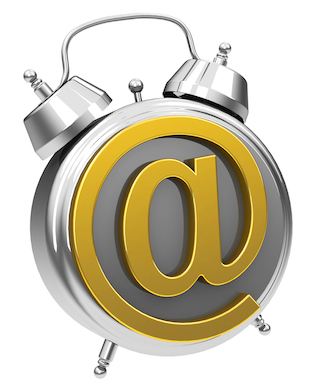The best time to send email
This subject comes up over and over again. Many senders are convinced  that there is a best time to send email. Countless research hours have been dedicated to finding that best time to send email. Numerous blog posts discuss what the best time to send email is.
that there is a best time to send email. Countless research hours have been dedicated to finding that best time to send email. Numerous blog posts discuss what the best time to send email is.
From my perspective, there are better places for senders to spend time than figuring out what the exact right time is.But, senders still ask when the best time to send mail is.
There are a lot of reasons I can come up with as to why there’s no best time to send email. But the really big one is that when you send a mail has no impact on when it gets delivered. There are multiple steps between hitting the send button and the mail being delivered to the inbox totally outside the control of the individual sender.
Email is designed as “store-and-forward.” This means there are potential delays at multiple steps inside the process.
Sending queues are called queues for a reason. Emails are sent out individually, particularly when an ESP uses VERP as part of its sending. There is actually a time overhead for making a connection to a recipient server and sending the email.
Receivers have queues, too. They can only accept so many incoming connections at a time. They have limited resources to accept all the mail their users want.
Receivers may delay mail between accepting it at the MX and delivering it to the inbox. This isn’t ideal and it’s not usual, but it can happen.
Recipients using IMAP accounts may not check mail regularly. They may only collect mail a few times a day.
These are only a few of the reasons that send time doesn’t necessarily equate with delivery time. Of course, 99% of the time email is mostly instantaneous. The internet is robust enough that a message sent is delivered seconds later. I see it happen all the time, when colleagues and I send email during calls. But, when mail fails, it sometimes fails spectacularly. Back in the dark ages (of the early 90s) I had an email that took almost a year to get to the recipients. Best I can tell, it got stuck somewhere in the depths of a machine in the middle of the university mail system. Eventually that system fell over and someone noticed and rebooted it (maybe it was walled up somewhere?). The reboot shook my message out of where ever it was stuck.